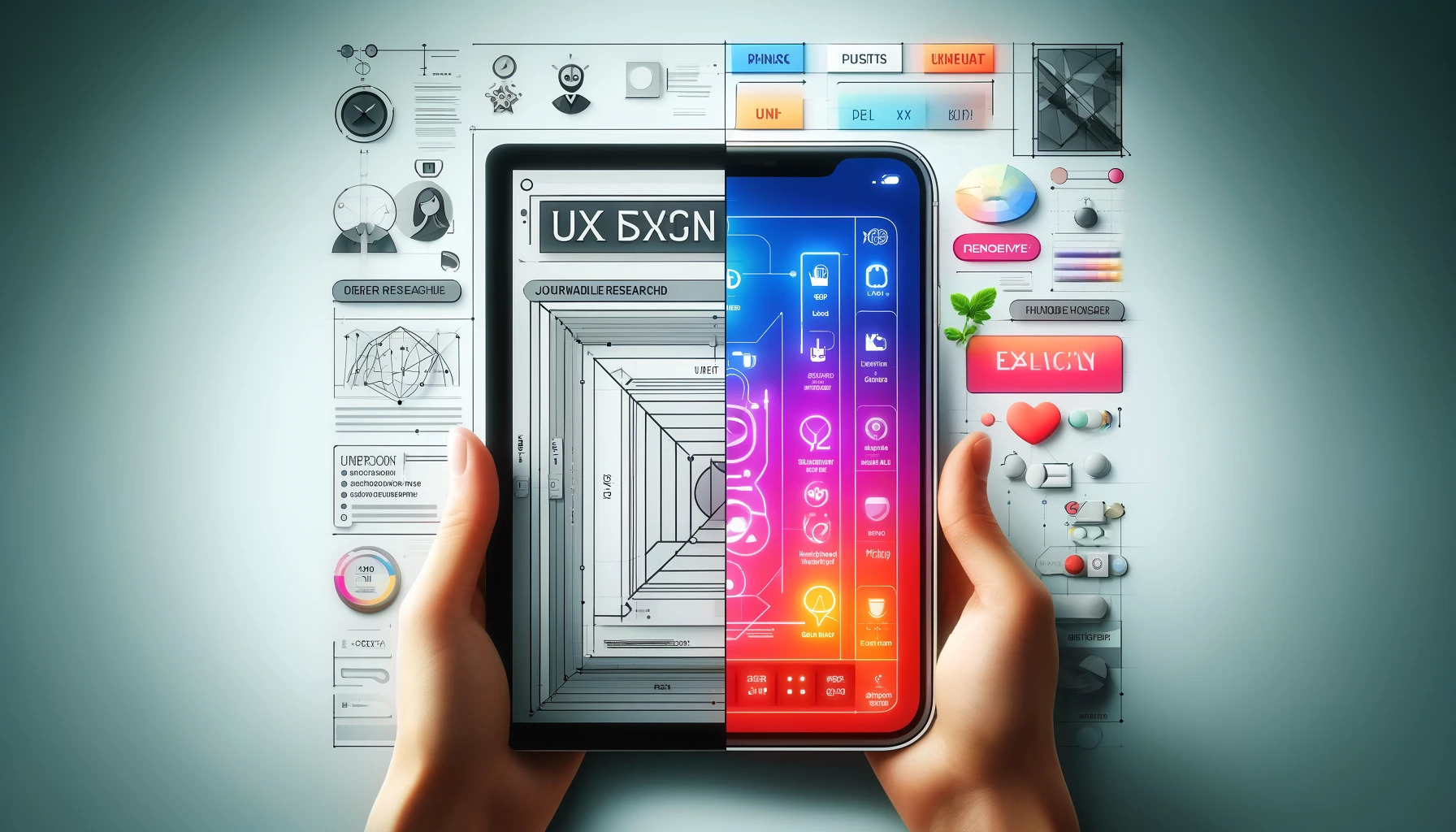Difference Between UX and UI Design

UX Design – It focuses on User Experience like how product feels and functions. Involves the user needs, solving problems and create smooth and continuous satisfying experiences.
UI Design – It focuses on visual design and interaction design. It ensures that the interface is aesthetically pleasing and easy to use.
UX Design Process: How UX Creates Quality in the World
When we follow the UX design process, we can create high-quality designs that deliver exceptional user experiences. The primary focus of UX is to ensure end-user satisfaction by providing good accessibility and usability.
For example, consider Instagram, one of the most famous applications. In daily life, users spend a significant amount of time on Instagram. This success is largely due to its continuously improved user experience. Instagram’s UX focuses on enabling users to share photos easily through the app, which is a simple yet impactful idea.
Let’s expand on this concept: A user captures a photo and shares it with the world. To make this experience even better, UX designers add features identified through the UX process. For instance, they consider how users feel when interacting with the app. Suppose a friend posts a photo from a trip. How can the app allow others to express their feelings? There are many ways: users can “like” the photo, leave fun comments, or share the photo with mutual friends. By focusing on these features, Instagram enhances user engagement and satisfaction.
Additionally, UX designers conduct accessibility testing and usability testing to ensure everyone can use the app effortlessly. This iterative improvement process contributes to Instagram’s growth.
To sustain success, Instagram applies market analysis and prioritizes customer experience (CX). For example, TikTok’s rapid growth highlighted users’ interest in short, entertaining videos. Instagram’s UX team recognized this trend and identified user expectations around entertainment. While not copying TikTok outright, Instagram implemented similar features, tailored to its audience. This strategic move fulfilled user expectations, leading to increased engagement and time spent on the app.
This is the power of UX: it captures user needs, feelings, and market trends to drive growth and create experiences that resonate deeply with users.
UI Design Process: How UI Creates a Colorful World
The UI design process focuses on making the digital world visually appealing and engaging. It encompasses interaction design, visual design, and motion design, all working together to create a delightful experience for users.
UI design also defines accessibility guidelines, ensuring that interfaces are usable by everyone, including people with disabilities. It emphasizes visually appealing elements, such as colors, typography, and layouts, while considering the emotions that each color evokes and how they align with the product’s purpose.
Designers pay close attention to layout sizes, ensuring they are optimized for various devices. Since each device has different screen dimensions, the UI process ensures that the design remains consistent and responsive across all platforms, whether it’s a mobile phone, tablet, or desktop.
